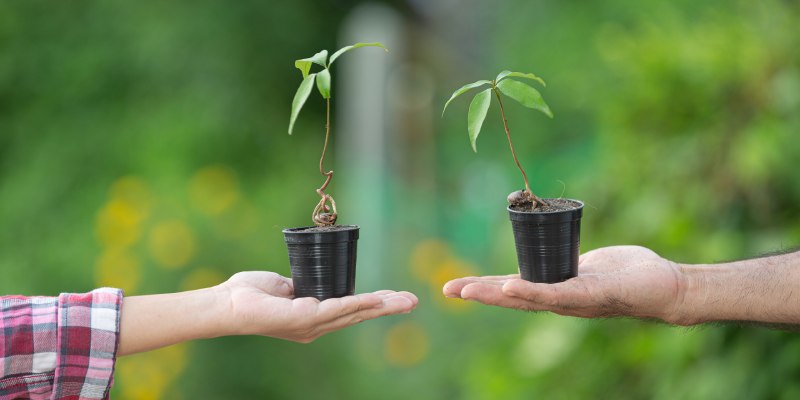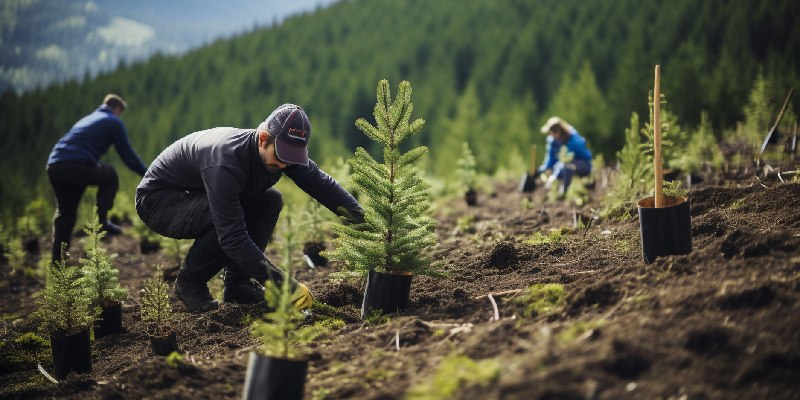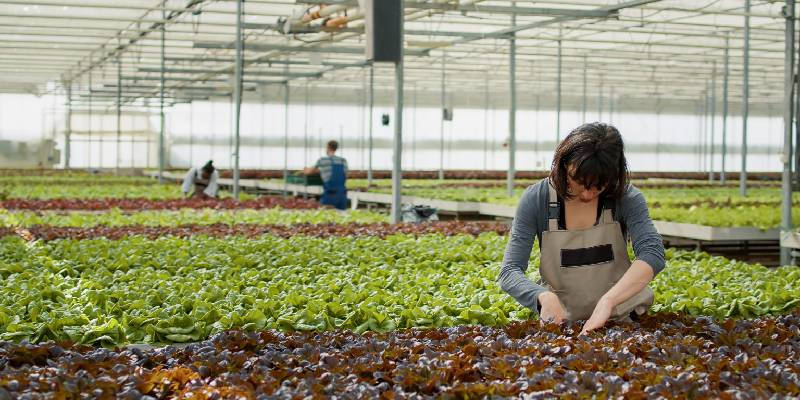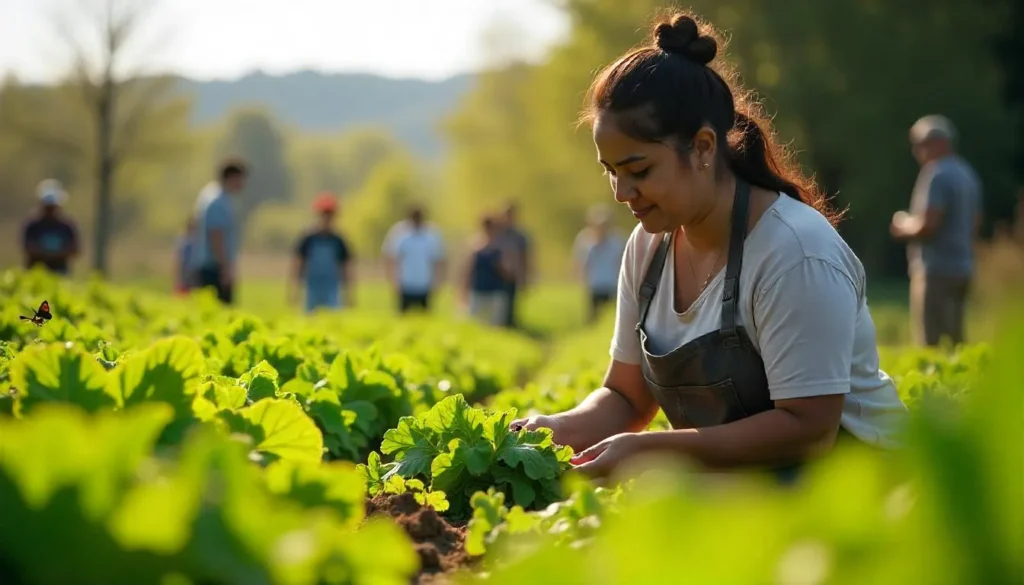In today’s rapidly changing world, sustainable farming practices have become more critical than ever.
Among these practices, agroforestry stands out as an innovative approach that integrates trees with agricultural activities.
By blending forestry with farming, agroforestry not only enhances the productivity of the land but also contributes to environmental conservation and improved livelihoods for farmers.
This holistic approach represents a significant step towards a greener and more sustainable future.
What is Agroforestry?
It is a land management system where trees and shrubs are grown around or among crops or pastureland.
This agricultural method benefits from trees and crops working together. It improves soil fertility, water retention, and biodiversity.
Agroforestry systems foster a symbiotic relationship that enhances productivity.
They offer greater environmental benefits compared to conventional farming practices.
What Are the Benefits of Agroforestry?
It offers a multitude of benefits that make it an attractive option for modern farming. Here are six key advantages:
- Improved Soil Health: Trees contribute organic matter to the soil through leaf litter and root decay, enhancing soil structure and fertility. This leads to healthier, more productive soils.
- Water Conservation: Tree roots help maintain soil moisture by reducing runoff and increasing water infiltration. This is particularly beneficial in areas prone to drought.
- Increased Biodiversity: This system supports a diverse range of plant and animal species, creating a more resilient ecosystem.
- Enhanced Crop Yields: The presence of trees can improve the microclimate around crops, reducing temperature extremes and wind damage, leading to better crop performance.
- Carbon Sequestration: Trees absorb and store carbon dioxide from the atmosphere, helping to mitigate the effects of climate change by reducing greenhouse gas levels.
- Economic Diversification: Farmers can generate additional income through the sale of tree products such as timber, fruits, nuts, and medicinal plants, diversifying their revenue streams and increasing financial stability.
Examples of Common Agroforestry Practices

Agroforestry encompasses a variety of practices, each tailored to specific environmental conditions and agricultural needs.
Here are eight common agroforestry practices and their features:
- Alley Cropping: Rows of trees with crops in between boost soil health and reduce erosion.
- Silvopasture: Trees and grazing land combined offer shade, improve pasture and provide timber or nuts.
- Windbreaks: Tree rows shield crops from wind, cut soil erosion, and improve yields.
- Riparian Buffers: Trees along waterways filter pollutants and prevent erosion while providing wildlife habitat.
- Forest Farming: Growing crops under trees, such as mushrooms or herbs, preserves biodiversity and allows sustainable harvesting.
- Home gardens: Small-scale agroforestry near homes mixes trees and crops for better food security and nutrition.
- Taungya System: Interplanting trees with crops during early tree growth optimizes land use and provides income before trees mature.
- Improved Fallows: Fast-growing trees planted during fallow periods restore soil fertility and structure.
How Agroforestry Helps to Conserve Biodiversity
It plays a significant role in conserving biodiversity through various mechanisms:
- Creating Habitats: Trees offer vital shelter and food for diverse wildlife, including birds, insects, and small mammals. They support ecological balance and enhance biodiversity.
- Supporting Pollinators: Diverse plants attract essential pollinators like bees and butterflies, which are crucial for crop production and ecosystem health.
- Preserving Native Species: Using native tree species helps maintain local biodiversity and supports the survival of indigenous flora and fauna.
- Reducing Habitat Fragmentation: Tree corridors and patches connect isolated habitats, allowing species to move and interact, which promotes genetic diversity and ecosystem health.
- Enhancing Soil Microbiome: Tree roots support beneficial soil microorganisms that are vital for nutrient cycling, soil fertility, and plant growth.
- Promoting Ecosystem Services: Trees contribute to crucial ecosystem services like water purification, soil stabilization, and climate regulation, benefiting both the environment and agriculture.
How to Do Agroforestry Near Bangalore

Starting agroforestry near Bangalore area is straightforward with the right approach.
At Sanjeevani Farms, we’re here to help you make the most of this eco-friendly practice.
Our team provides the expertise and resources needed to seamlessly blend trees with your agricultural activities, bringing both environmental and financial rewards.
We’re ready to assist you through every step, turning your land into a vibrant, sustainable space.
Here’s how you can begin and how Sanjeevani Farms can make the process easier:
- Assess Your Land: Conduct a thorough assessment of your land to understand soil type, climate conditions, existing vegetation, and water availability. This will help determine the most suitable agroforestry practices for your area.
- Set Clear Goals: Define your objectives, whether it’s improving soil health, enhancing biodiversity, increasing crop yields, or diversifying income. Clear goals will guide the design and implementation of your agroforestry system.
- Choose Suitable Trees: Select tree species that are well-adapted to your local conditions and compatible with your crops. Consider factors such as growth rate, root structure, and the specific benefits they offer, such as nitrogen fixation or fruit production.
- Design the System: Plan the layout of trees and crops to maximize the positive interactions between them. Consider factors such as spacing, orientation, and the potential for future growth.
- Plant and Establish: Properly plant trees and manage their early growth to ensure they are established well. This may involve providing adequate water, protecting young trees from pests, and managing competing vegetation.
- Monitor and Adapt: Continuously monitor the performance of your agroforestry system and make adjustments as needed. This could involve pruning trees, adjusting crop rotations, or addressing any emerging issues.
Sanjeevani Farms: Your Partner in Agroforestry near Bangalore
At Sanjeevani Farms, we understand the immense potential of agroforestry in creating sustainable and productive farming systems.
Our managed farmland serves as a model for agroforestry near Bangalore, demonstrating the numerous benefits and possibilities of this integrated approach.
By choosing Sanjeevani Farms, you are not only investing in a greener future but also gaining access to expert guidance and support to implement agroforestry on your land.
Partner with us to transform your farming practices and contribute to a more sustainable world.
Conclusion
Agroforestry represents a powerful and sustainable way to integrate trees and agriculture, offering numerous environmental and economic benefits.
By enhancing soil health, conserving water, increasing biodiversity, and providing additional income sources, agroforestry can help create a more resilient and productive farming system.
Sanjeevani Farms is committed to promoting and supporting agroforestry practices near Bangalore, making it easier for farmers to adopt this innovative approach.
Join us in our mission to create a greener future.
Contact Sanjeevani today to learn more about our managed farmland and how we can help you implement agroforestry on your land.
FAQs
What is the difference between agroforestry and social forestry?
Agroforestry integrates trees with agricultural activities to boost productivity and sustainability, enhancing soil health and biodiversity. Social forestry focuses on involving local communities in forest management, aiming to provide social, economic, and environmental benefits, such as fuelwood, fodder, and timber, while promoting conservation and community well-being.
What are the criteria for selecting trees in agroforestry?
Selecting trees for agroforestry involves evaluating growth rate, compatibility with crops, and root structure. Consider local climate suitability and the specific benefits trees provide, such as nitrogen fixation, timber, or fruits. These factors ensure that the trees enhance farm productivity, support crop growth, and offer additional benefits while thriving in the local environment.
Why are forests called collective banks?
Forests are termed “collective banks” because they offer diverse resources and services benefiting entire communities. They provide timber, fuelwood, and non-timber products, regulate water cycles, and support biodiversity. Forests also contribute to climate regulation, making them invaluable assets that support social, economic, and environmental stability for all.
What are the economic and ecological aspects of agroforestry systems?
Agroforestry systems boost farm income by diversifying products like timber, fruits, and nuts. Ecologically, they improve soil health, conserve water, and enhance biodiversity. Additionally, these systems sequester carbon, mitigating climate change. By integrating trees with crops, agroforestry creates a balanced approach to sustainable agriculture and environmental stewardship.
What is the role of agroforestry in climate change?
Agroforestry combats climate change by sequestering carbon in trees and soil, reducing greenhouse gases. It also enhances agricultural resilience to climate variability by improving soil health and water retention. This approach supports adaptation and mitigation efforts, making it a valuable strategy for balancing agricultural productivity with climate change challenges.





